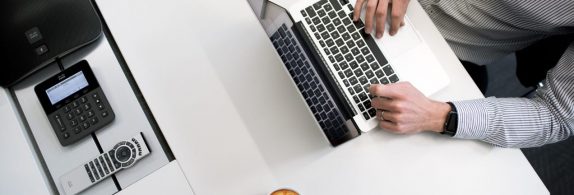Declutter your medical practice in 6 steps
Tired of piles of paper cluttering your practice, constant phone interruptions and not enough time to refocus and relax? MedicalDirector’s Chief Clinical Advisor and GP, Dr Charlotte Middleton, reveals some simple tips to declutter and get organised for a more stress-free day at the clinic.
1. The waiting room and the patient experience
We’ve already discussed the importance of designing a more patient-centric practice and why first impressions matter in the waiting area. Are patients being greeted by old magazines and a front desk piled high with patient files, pamphlets and clipboards?
You can give your patients a clean, minimalist experience in the waiting room, including having an easy self check-in kiosk, or reminders and recalls on their phone.
Keeping the space relatively clutter-free with organised, family-friendly ‘pods’ instead of rows of chairs, can also give the impression that your patient won’t be waiting behind crowds of people.
2. Go paperless
Paper-based records can cause particular inefficiencies for providing personalised care, especially for patients with complex medical conditions and chronic conditions, who often have very large records. Paperless solutions not only boost efficiency of retrieving and accessing patient records, but declutter and streamline your entire workflow process.
3. Minimise interruptions
The last thing any busy, time-poor practitioner needs is too many unnecessary interruptions in the day. Every time a patient phones, there’s no need for your front staff to alert you to each of them individually. Ask your practice manager or receptionist to send all non-urgent patient queries through an internal messaging system, rather than call and interrupt you. This allows you to prioritise your time and focus on more urgent or serious patient care.
4. A clear, ‘smart’ consult room
A consult room cluttered with papers, equipment and files is stressful and inefficient for the doctor and overwhelming for the patient. One of the simple ways to offer a more inviting, patient-centric design and layout is to simply remove big, huge desks in your consult room. Big desks physically ‘divide’ the space between you and your patient, so by removing it, you’re immediately evoking a more patient friendly space.
Try organising everything away in cupboards and keeping paper to a minimum. There are also some smart ways to can use technology to better engage with your patient. For instance, installing a TV screen up on the wall is a simple, yet effective way to show something you’re doing, discuss your patient’s results or share patient education resources.
5. Declutter your mind with mindfulness
There is a lot of research around the benefits of mindfulness, and just taking the time to try and be in the present moment can help clear some of the cluttered ‘noise’ in the mind and tackle the everyday stresses of being a doctor.
Simple breathing exercises between patients can really help bring your mind back into the moment and to feel more focused for your next patient. Try making a conscious habit to do this at the start of the day, between patients, and when you’re feeling especially rushed.
6. Small changes can make a big difference
Implementing small, practical measures to declutter and streamline your day can make a big change to your workflow and wellbeing over time.
After all, it’s not just the patient load, but all the admin work that goes with it that can be difficult to manage and squeeze into the working day. And this is where technology can help.
For instance, one of the benefits of cloud software is accessing patient information instantly anywhere and on any device. This means while at home, or on the go seeing patients, you could access test results, write clinical notes, update patient information, all in real-time, without having to wait and go back into the office. Over time, this small change can make a huge impact to streamline and organise your workflow, and open more valuable time in your day.









